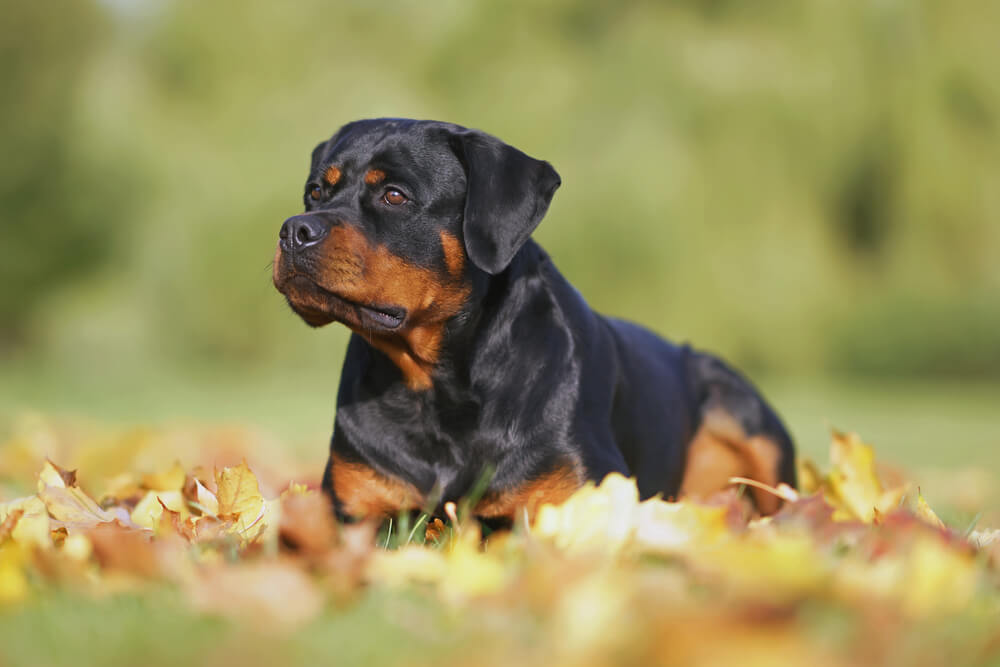
DogFoodAdvisor is reader supported See how
Dog Food Advisor is 100% impartial and is never paid to promote any brand. But if you buy using links on this page, we may earn a referral fee.
Asserting ownership over food is the kind of thing you might see a toddler doing when you give them a packet of sweets and ask them to share. In dogs, this is called resource guarding.
With kids the response is often a firm shake of the head while grabbing the prized candy tightly and digging their heels in before the whole furor descends into anger and tantrums. And not just from the toddler.
It could be argued this is an animalistic, instinctive response programmed deep within every human, even if most of us have learned to temper it (although no doubt most of us will admit to getting ‘hangry’ from time to time).
So when our dogs show similar aggression over ownership of their food, as pet parents, we may not be surprised. We may even find it amusing the first time it happens. “Aw, look, little Pookie doesn’t want anyone near his kibble!”
But this resource guarding behavior can rapidly become problematic if the aggression is left unchecked and ramps up to levels where other household pets, pet parents or, worst of all, children feel threatened.
So what causes this heightened level of over-protection in dogs, and what do you do if your dog is over-protective of their food?
What is resource guarding in dogs?
Resource guarding in dogs is when they display anger or aggression if anyone — humans and animals alike — tries to approach them while they’re eating, being given a treat, are in their bed or have their favorite toy.
They might stand rigid, snarling at everyone and everything, not letting anyone near them and their possession, and showing signs of aggression if anyone gets too close or threatens to take the item away.
They’re essentially saying: “This thing here is mine, get yourself away from it! I do bite, you know — look, here are my teeth in case you’ve forgotten.”
“Resource guarding is a normal behavior in every species, including humans,” says Amanda Florsheim, a veterinarian and owner of Veterinary Behavior Solutions, Dallas.
“But when you take a normal behavior and mess it up by spinning it on its head, it’s called maladaptation. It’s usually driven by anxiety and impulse-control issues. Your dog’s background — in terms of early developmental phases and how resources are handled early in life — are a big factor.”
What are the signs of resource guarding?
You’ll no doubt know the signs when you see them (we’ve mentioned some above): you put your dog’s food down, and they instantly display some, or all, of the following:
- Snarling or growling
- Showing the whites of their eyes
- Teeth-baring
- Ears flattened or pointed back
- A rigid body
- ‘Whale eye’
- Snapping
- And, at the severe end of the spectrum, biting
What causes dogs to guard their food?
When you understand that most dogs who guard their food are anxious about it being removed, your sympathy levels might rise.
“There can be various causes of dogs guarding resources,” says Joe Nutkins, an accredited dog trainer and behaviorist at Dog Training for Essex & Suffolk in the U.K. “Sometimes it’s caused when a large litter of puppies has access to only one bowl so they learn early on to stand up for themselves if they want food or water.
“Other times, a puppy can be calm around items but is tested by unknowing parents who show their puppy they’re able to take toys away just to show they can, so the puppy starts to develop a way to stop this happening.”
It can also be triggered by trauma — for example, if you’re the parent of a rescue dog who’s been mistreated, has been the victim of abuse, has been in a shelter where food is shared or has lived through a natural disaster where resources are limited, they naturally might become protective over food.
“Dogs with no history of resource guarding may start with no apparent reason,” adds Nutkins. “I’d urge any owner who suddenly sees their dog protecting their food to book their dog with the vet to check for discomfort, pain or other health issues. Pain in dogs is a huge cause for behavior changes.”
Are certain dog breeds more prone to resource guarding?
Any breed of dog can begin to guard resources, but Nutkins says that early influences such as fighting siblings to get to the food bowl or having food taken away to assert dominance are more likely to cause issues than breed type alone.
“I’ve worked with various breeds with food-guarding issues, including Chihuahuas in multi-dog homes, a Yorkshire terrier with epilepsy who had neurological issues, and even a young Golden Retriever who was starting to growl and curl their lip when younger family members crowded around and stroked the dog while the dog tried to eat. It doesn’t make their breeds more likely to resource guard, but highlights the need for early training with all breed types.”
How do you stop resource guarding in dogs?
It’s not always an easy process, but it’s possible, with patient training, to stop food aggression in your dog.
“The aim is to condition your dog so that just because you walk past their food bowl doesn’t mean something bad’s going to happen,” says Florsheim.
“The first thing is to give your dog space. Aggression is a tool that dogs use in situations that make them uncomfortable, just like us. So if you see a dog tense up, back away. If they seem aggravated when you’re five feet from their bowl, make it six feet to reduce the tension, then figure out the threshold that your dog’s comfortable with.
“I recommend standing at the distance your dog’s comfortable with and, while they’re eating, toss a treat to your dog that’s way better than what they’re eating. Then repeat until you feel comfortable moving slightly closer until, eventually, you can walk up to the dog.”
Florsheim doesn’t believe in simply yanking a dog’s food bowl away from them. “There’s a lot of outdated information on dominance. Scientifically speaking, dogs are not pack animals,” she says. “They do have a social structure, but humans are not a part of that. We control all their resources, so we’re trying to teach them that if they give up this item, they’ll get something way better in return, so they don’t automatically go into fight or flight mode.”
Nutkins agrees that giving your dog space to eat is key. “Some dogs are guarding the food itself, some extend to the area they’re in, some the crate, their bowl, the rug they’re on. One tip is to move away while they eat, head to the door, and invite them out for toilet. This is a good routine to show them you’re not interested in their food and means you’re not close by while they eat and tempted to show the dog you can take their food when you shouldn’t.”
Like any dog training, there’ll be setbacks, but with perseverance, you’ll eventually see a dog that can eat without food aggression, and mealtimes will be less stressful for all involved.
Final word
The Dog Food Advisor does not accept money, gifts, samples or other incentives in exchange for special consideration in preparing our reviews.
However, we do receive a referral fee from online retailers (like Chewy or Amazon) and from sellers of perishable pet food when readers click over to their websites from ours. This helps cover the cost of operation of our free blog. Thanks for your support.
For more information, please visit our Disclaimer and Disclosure page.
Article reviewed by
Andrew Dickens
Editor
Andrew Dickens is an award-winning writer, editor and broadcaster with 20 years in journalism. He’s created compelling content on film and television, travel, food and drink, physical and mental health, business, sport, technology and politics. And, of course, dog food.




